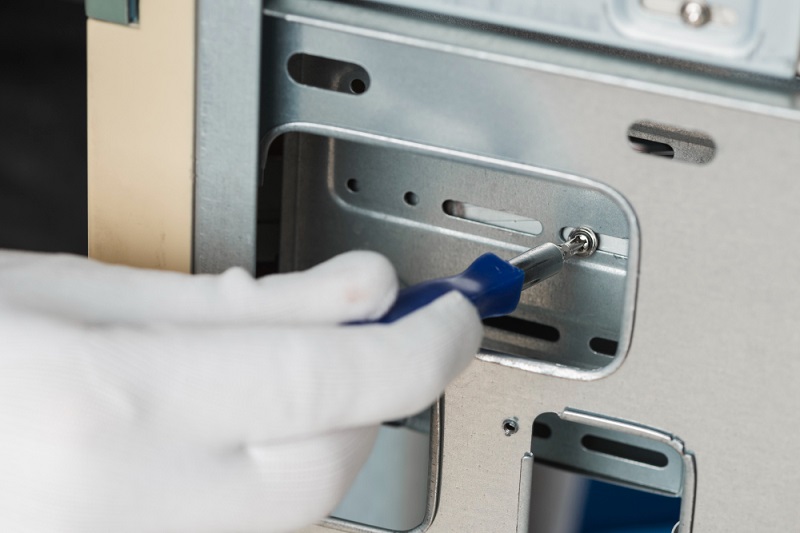In the ever-evolving world of aviation, efficiency is not merely a goal but a necessity. The demand for faster, safer, and more environmentally friendly air travel has driven the industry to innovate relentlessly. At the heart of this innovation are advanced aircraft tools, which are revolutionizing the way aircraft are designed, built, maintained, and operated. This article explores how these cutting-edge tools are enhancing efficiency across the aviation sector.
The Power of Precision: CAD and CAM Systems
Computer-Aided Design (CAD) and Computer-Aided Manufacturing (CAM) systems are pivotal in the aircraft industry. These tools allow engineers to create highly detailed 3D models of aircraft components with incredible precision. By simulating and analyzing these designs digitally, potential issues can be identified and addressed long before physical prototypes are built. This not only speeds up the design process but also reduces costs associated with material waste and rework.
CAD and CAM systems also facilitate the seamless integration of various components, ensuring that they fit together perfectly. This level of precision is crucial for optimizing aerodynamic performance and fuel efficiency, which are critical factors in reducing operational costs and environmental impact.

Streamlining Production: Additive Manufacturing
Additive manufacturing, commonly known as 3D printing, has made significant strides in the aviation industry. This technology allows for the production of complex and lightweight components that would be challenging or impossible to create using traditional manufacturing methods.
By building parts layer by layer, additive manufacturing minimizes material waste and allows for rapid prototyping. This capability is especially valuable in the development of custom or low-volume components, which are often required in the aviation industry. Additionally, 3D printing enables the creation of parts with intricate internal structures that enhance strength while reducing weight, contributing to overall aircraft efficiency.
Enhancing Maintenance: Predictive Analytics and IoT
The maintenance of aircraft has traditionally been a time-consuming and costly process. However, the advent of predictive analytics and the Internet of Things (IoT) is transforming maintenance operations. Sensors embedded in various parts of an aircraft continuously collect data on its performance and condition. This data is then analyzed using advanced algorithms to predict potential failures and schedule maintenance before issues become critical.
Predictive maintenance not only improves safety but also reduces downtime and maintenance costs. By addressing issues proactively, airlines can keep their fleets operational for longer periods and optimize their maintenance schedules, leading to significant improvements in overall efficiency.
Optimizing Operations: Advanced Flight Management Systems
Modern flight management systems (FMS) are integral to optimizing flight operations. These systems use real-time data to plan and adjust flight paths, manage fuel consumption, and ensure adherence to air traffic control directives. Advanced FMS can analyze a multitude of variables, including weather conditions, air traffic, and aircraft performance, to determine the most efficient routes and altitudes.
By optimizing flight paths, these systems help reduce fuel consumption, lower emissions, and improve punctuality. The ability to make data-driven decisions in real-time is a game-changer for airlines striving to enhance operational efficiency and minimize their environmental footprint.
The Role of AI and Machine Learning
Artificial Intelligence (AI) and machine learning are becoming increasingly important in aviation. These technologies are capable of processing vast amounts of data and identifying patterns that humans might overlook. In the context of aircraft tools, AI can be used to enhance everything from design optimization and predictive maintenance to air traffic management and customer service.
For instance, AI algorithms can optimize the design of aircraft components by analyzing historical performance data and predicting how different designs will behave under various conditions. Similarly, machine learning models can improve predictive maintenance by continuously learning from new data and refining their predictions.

Conclusion
The integration of advanced aircraft tools is driving a new era of efficiency in the aviation industry. From the precision of CAD and CAM systems to the innovative potential of additive manufacturing, and from the predictive power of analytics and IoT to the operational insights provided by advanced flight management systems and AI, these aircraft tools are reshaping every aspect of aviation. As technology continues to advance, the industry can look forward to even greater efficiencies, reduced costs, and a more sustainable future for air travel.

